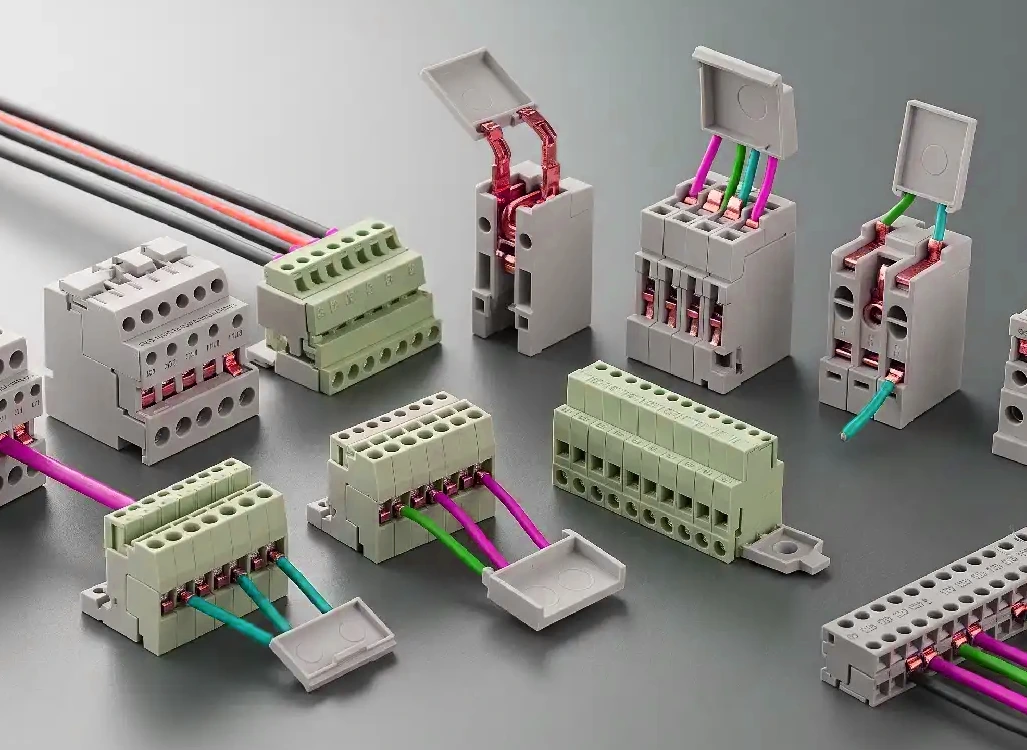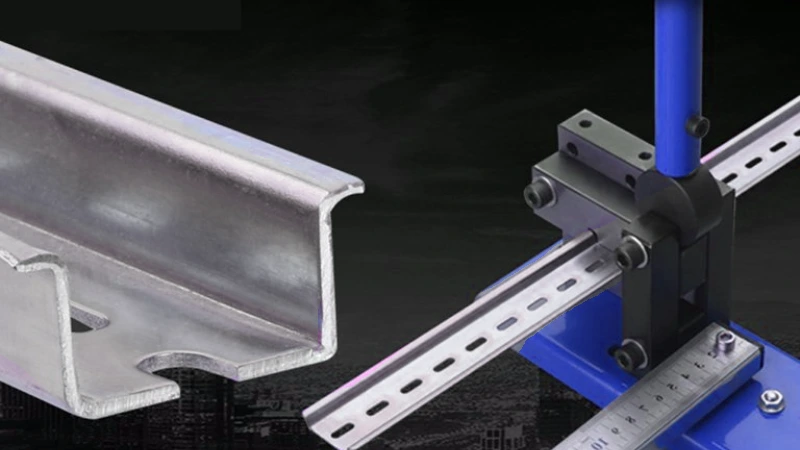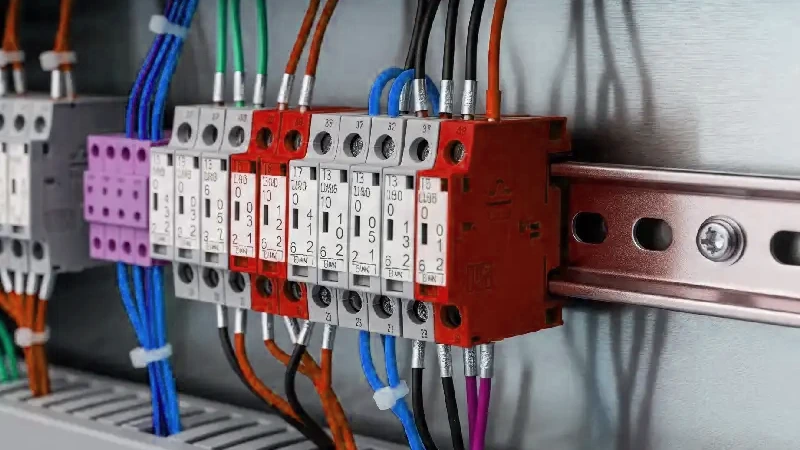When tackling electrical projects, understanding the nuances of junction boxes is crucial. Two common types you’ll encounter are old work and new work boxes, each designed for specific installation scenarios. New work boxes are intended for installation during new construction or when walls are open, featuring flanges for secure attachment to studs before drywall is installed.
Conversely, old work boxes are specifically designed for adding electrical fixtures or outlets to existing walls without extensive demolition. These junction boxes utilize specialized mounting mechanisms, such as swing-out clamps or friction wings, to grip the back of the drywall, providing a secure hold in finished walls. Recognizing these distinct designs is the first step in choosing the right junction box for your electrical needs.
What Is Old Work Junction Box
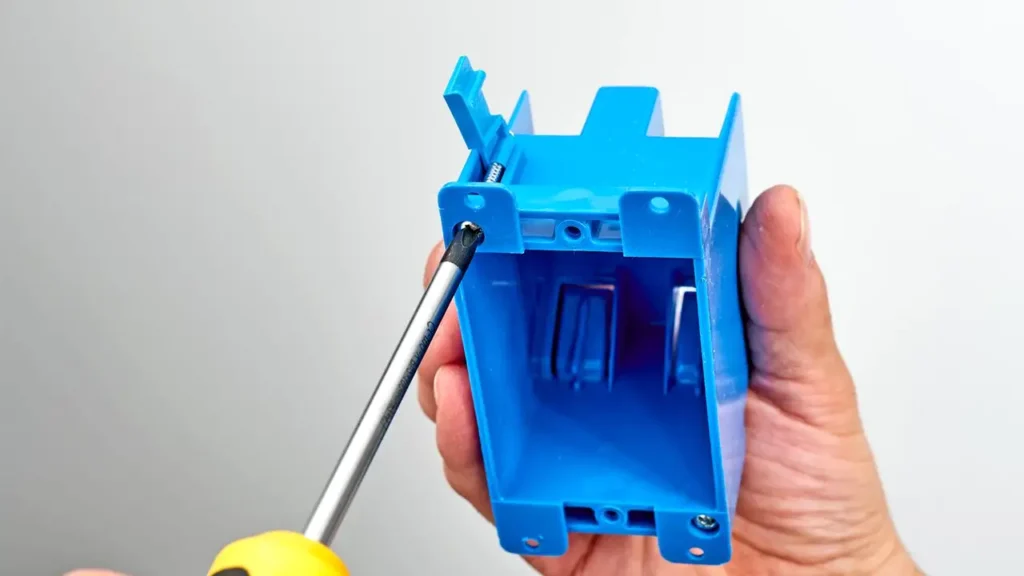
An old work junction box, also known as a remodel box or cut-in box, is a specific type of electrical box designed for installation in existing walls or ceilings where access to the wall studs is limited or unavailable. Unlike new work boxes that are typically nailed or screwed directly to studs before drywall is installed, old work boxes feature specialized mounting mechanisms, such as swing-out clamps or wings. These clamps are tightened from inside the box, expanding outwards to grip the back surface of the drywall or other wall material, securely holding the box in place without the need for direct stud attachment.
The primary advantage of old work junction boxes is their ease of installation in finished spaces. This makes them ideal for adding new light fixtures, outlets, or switches to existing rooms without requiring extensive demolition or access to the wall framing. Electricians can simply cut a hole in the wall, insert the old work box, and then tighten the mounting clamps to secure it. This streamlined installation process saves time and minimizes disruption compared to the more involved process of installing new work boxes in existing structures.
What Is New Work Junction Box
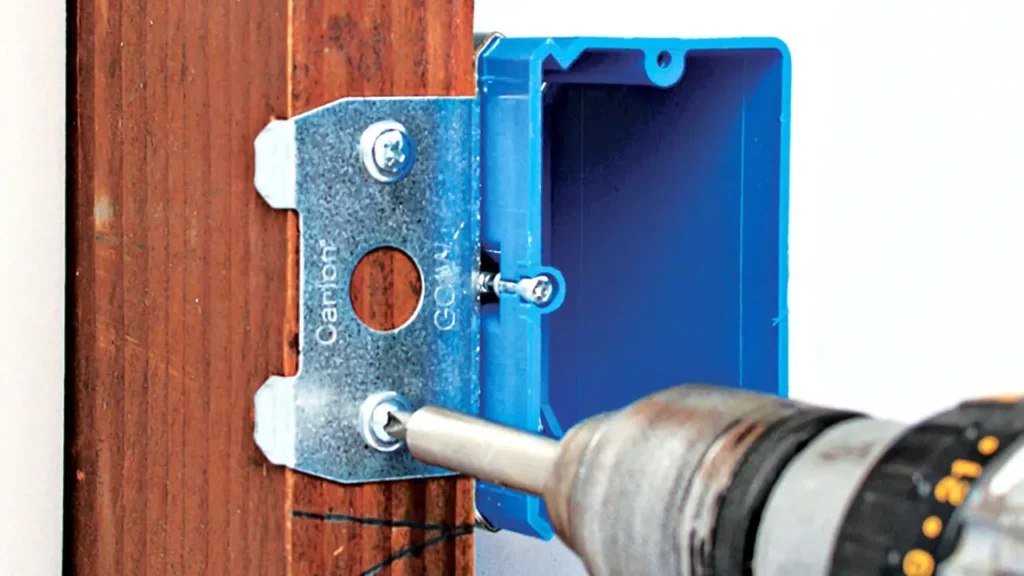
A new work junction box is a standard type of electrical box designed for installation during new construction or significant remodeling projects where the wall cavities are readily accessible before the drywall or other wall coverings are installed.
These old work junction boxes typically feature mounting brackets, often with pre-drilled holes or nail-on flanges, that are directly attached to wall studs or other structural framing members. This direct attachment provides a very secure and stable mounting platform for electrical devices and wiring.
The installation of new work junction boxes occurs early in the building process, allowing electricians to easily position and secure the boxes at the desired locations before the walls are finished. This ensures proper alignment and support for outlets, switches, and light fixtures. While requiring more upfront planning and access compared to old work boxes, the robust mounting of new work boxes contributes to a more structurally sound and long-lasting electrical installation.
Old Work vs New Work Junction Box
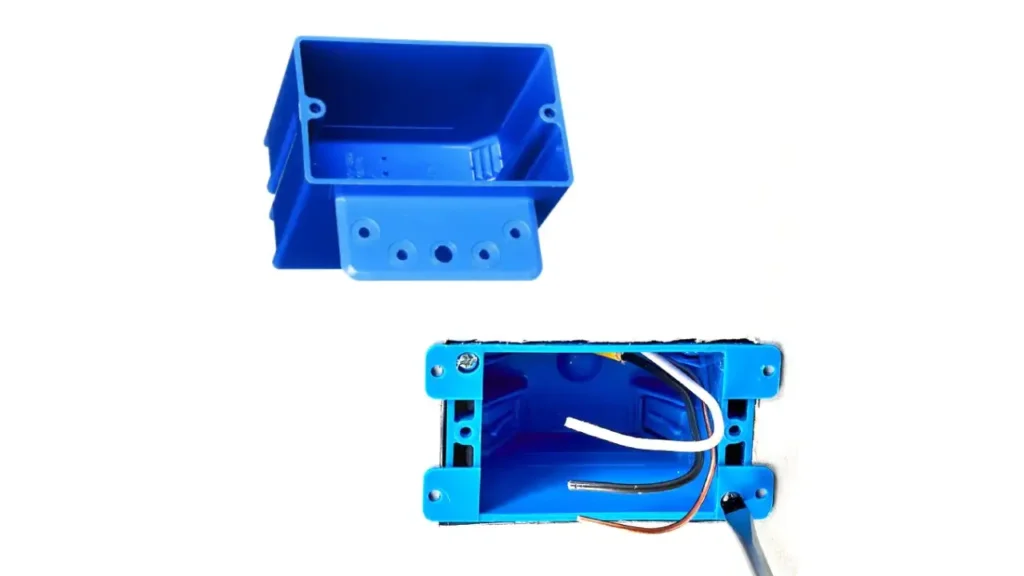
Electrical junction boxes are essential for safe wiring. New work boxes are for new construction, attaching to studs before walls are finished. Old work junction boxes are for existing walls, using clamps for secure installation without stud access.
New Work Junction Boxes
New work junction boxes are designed for installation during the initial construction phase or in extensive renovation projects. These boxes are attached directly to the wall studs or framing before any wall covering, such as drywall, is installed. This method provides a very secure and stable base for electrical devices.
The design of new work boxes often includes features like mounting brackets or flanges with pre-drilled holes, allowing them to be nailed or screwed directly to the studs. This direct attachment ensures that the box is firmly held in place, capable of supporting the weight of wiring and any connected fixtures. This type of installation is crucial for ensuring long-term reliability and safety of the electrical system.
Old Work Junction Boxes
Old work junction boxes, also known as remodel or cut-in boxes, are used when installing electrical devices in existing walls or ceilings. These boxes are designed to be installed after the wall covering, like drywall, is already in place, making them ideal for adding outlets or switches to finished rooms without major demolition.
Instead of attaching to studs, old work boxes use specialized mounting mechanisms to secure themselves to the wall. These mechanisms typically involve clamps or “ears” that extend and tighten against the back of the wall surface when screws are turned. This creates a firm grip, holding the box in place. While convenient, old work boxes may not be as structurally robust as new work boxes, especially for heavy fixtures.
Here’s a chart comparing old work and new work junction boxes:
| Feature | Old Work Junction Box | New Work Junction Box |
| Installation Time | After drywall or wall covering is installed | Before drywall or wall covering is installed |
| Mounting Method | Uses clamps or tabs that grip the back of the wall | Nailed or screwed directly to studs or joists |
| Wall Access | Requires only a cutout in the finished wall | Requires access to the wall framing |
| Stability | Can be less inherently stable than new work boxes | Generally very stable due to direct attachment to framing |
| Best Used For | Adding or replacing boxes in existing walls | New construction or major renovations with open walls |
| Ease of Installation | Generally easier for retrofitting | Generally easier during initial construction |
| Cost | Can sometimes be slightly more expensive | Can sometimes be slightly less expensive |
| Appearance | Sits flush with the finished wall | Sits flush with the finished wall |
| Stud Alignment | Not dependent on stud location | Typically mounted directly to a stud or between studs |
| Box Types | Available in various materials (plastic, metal) and sizes | Available in various materials (plastic, metal) and sizes |
Key Differences Summarized:
- Timing: Old work boxes are for existing walls; new work boxes are for pre-drywall stages.
- Attachment: Old work boxes grip the wall; new work boxes attach to framing.
- Accessibility: Old work requires only a hole; new work needs open wall cavities.
Choosing the right type of junction box depends entirely on the stage of construction or renovation. For adding to existing structures, old work boxes are the go-to. For new builds or when walls are open, new work boxes are the standard.
How to Choose Old Work and New Work Junction Box
Choosing between old work and new work junction boxes hinges primarily on the construction phase. For existing walls where the drywall or wall covering is already in place, an old work box is the appropriate choice. These boxes are designed for retrofit installations, featuring clamps or expanding tabs that secure them to the back of the finished wall. This eliminates the need to open up large sections of the wall, making them ideal for adding new fixtures, outlets, or switches in established buildings. Their installation involves creating a precisely sized cutout and then tightening the box’s securing mechanisms from the front.
Conversely, new work junction boxes are specifically designed for installations before the wall coverings are applied. These boxes feature flanges with holes that allow them to be directly nailed or screwed to wall studs or joists, providing a very stable and secure mounting. This method ensures the box is firmly integrated with the building’s framing, minimizing the risk of movement or loosening over time. When working with open walls during new construction or significant renovations, new work boxes offer ease of installation as they can be positioned and attached before the drywall obscures the framing.
Here are some tips helping you choose the suitable old work junction box and new work junction box in the following:
Existing Walls (Retrofit):
When you need to add or replace electrical boxes in walls that are already finished, old work boxes are the necessary solution. Their design allows for installation without requiring extensive demolition.
You simply cut an appropriately sized hole, insert the box, and then engage the clamps or tabs from the front to secure it against the back of the wall. This method is particularly useful for adding new outlets, light fixtures, or switches in existing rooms where accessing the wall framing is impractical or undesirable, minimizing disruption to the finished surfaces.
New Construction or Open Walls:
If you are working on a new building or a renovation project where the wall framing is exposed, new work boxes are the standard and often preferred choice. These boxes are designed to be directly attached to the wooden or metal studs before the drywall or other wall covering is installed.
This direct attachment provides superior stability and ensures the box is securely integrated into the wall structure. Installing them at this stage is generally easier as you have unobstructed access to the framing and can precisely position and fasten the boxes before the walls are closed up.
Conclusion
The primary distinction between old work and new work junction boxes lies in their installation method and application. New work boxes are designed for installation during new construction or significant renovations where wall cavities are accessible, featuring nail-on or screw-on brackets for secure attachment to studs. Old work boxes, on the other hand, are specifically engineered for existing walls, utilizing clamps or wings that grip the drywall to hold the box in place without requiring access to studs.
Choosing the correct type of junction box is crucial for a safe and code-compliant electrical installation. Using a new work box in an existing wall can lead to insecure mounting, while attempting to force an old work box into a stud-mounted scenario can compromise its stability. Understanding these differences ensures that the appropriate box is selected for the specific project requirements, resulting in a reliable and safe electrical connection.
For those seeking wholesale junction boxes, including both old work and new work varieties, Linkwell Electrics offers a comprehensive range of reliable and durable solutions. Their extensive selection caters to diverse electrical project needs, ensuring you can find the right junction box for any application. Consider Linkwell Electrics for your wholesale junction box supply.

